floor bounce adding joists
My house built in the 30`s has very springy floors. The joists are 2x6 spanning 11` and are spaced 18"oc. I`m going to add joists between them making it 9"oc. Adding a cross beam is not going to work due to limited head room. My question is how to fasten the new joists to the sub floor from the basement. Are there some kind of steel connectors or something?
I don`t want to tear out all the floors to do it from above.
Comments (45)
mightyanvil
15 years agolast modified: 9 years agoIf the subfloor is adequate to span 18" then it is not necessary to place the additional joists halfway between the existing joists. You can put one new joist next to each existing joist (sistering) and nail them together well. Structurally, it is the same as your original plan and should give you a very stiff floor (defl.=.17" or L/760).
The actual span of the subfloor between joists will then be 15" instead of 16.5". If there is any blocking or bridging you can remove it since it isn't effective for joists of less than 12" in nominal height and the sistered joists will help in that regard anyhow.
rg123
Original Author15 years agolast modified: 9 years agoI was thinking of sistering but I was told elsewhere that it would not make much difference.
Related Professionals
Channahon Kitchen & Bathroom Remodelers · South Barrington Kitchen & Bathroom Remodelers · Three Lakes General Contractors · Fridley General Contractors · Jamestown General Contractors · Kentwood General Contractors · Medway General Contractors · Mountain View General Contractors · West Whittier-Los Nietos General Contractors · Wheeling General Contractors · Aurora Painters · Helena Painters · Midlothian Painters · Murray Painters · Wantagh Paintersmightyanvil
15 years agolast modified: 9 years agoSistering doubles the moment of inertia of each joist which cuts the deflection in half. Since excessive deflection is your problem why would that not be helpful? Perhaps someone thought the problem was with the subfloor span.
I think I misspoke earlier: the existing deflection at maximum design load is .68" (uncomfortably bouncy) and the new deflection of .34", while not super stiff, would feel OK to many people and would meet the standard building code deflection limit of L/360.
If you want a really stiff floor, sister the existing joists with two 2x6's or one 2x8.
sdello
15 years agolast modified: 9 years agosearch this forum for bouncy floors. It's been discussed before.
Deflection (static) is not necessarily the issue here. It is stiffness and natural frequency. Sistering will help some but not a whole lot. You can run a strip of steel along the bottom of the existing joists and add a lot of stiffness (and significantly increase the moment of inertia). The steel must be intimately attached to the wood so that it doesn't slip relative to the wood.
Another method is to add a new support in the basement to cut your span in half.
Good luck
rg123
Original Author15 years agolast modified: 9 years agoI read about the steel straps before but I think some of my deflection is between the joists. Thats why I figured on adding joists between the existing ones. If I do decide to add and not sister would it be worth using LVL? Again the fastener question.
thankssdello
15 years agolast modified: 9 years ago"I think some of my deflection is between the joists."
what do you have for flooring? 1.5 ft is very small. Any reasonable flooring should span that no problem and it would not cause bounce (frequency would be too high to notice). A bouncy floor is because of the natural response frequency in the long span direction. Typical floor response frequency can be near the same frequency as a normal walking speed, the floor is excited near its resonant frequency and that's why the floor "bounces" as you walk a cross it.
rg123
Original Author15 years agolast modified: 9 years agoI was initally thinking subfloor span because the hardwood floor boards seem to have a bit of a gap between them where the joists would be underneath. In the areas where the voids are it is tight. The subfloor is 3/4" t&g.
I will probably go with the 2x8 sistering on a few joists to see how it works in those areas. 2.5" screws every 10" with adhesive ok? Also do the sisters need to be fastened to the subfloor?mightyanvil
15 years agolast modified: 9 years agoI can't think of a reason to use adhesive or to fasten the added joists to the subfloor or for them to touch the subfloor. You could use TimberLoc heavy duty wood screws top and bottom every 24" o.c., staggered, or double that for 16d nails although the loading probably doesn't require that much. If the ends don't have full bearing the fasteners become far more important.
sdello
15 years agolast modified: 9 years agomightyanvil
I do indeed stand corrected on my math from that post of a year ago that you quoted. In fact I made the exact error that you claim, i.e. DOUBLING (not adding 2 in.) the depth would produce 8x times the stiffness as opposed to doubling the with which is a doubling of the stiffness.
However, had you continued to read that one you would have come to brickeyee's post that I've pasted below and supports the attachment of a strip of steel to the bottom of the joists. (Which is what I suggested to the OP.) Stiffness is the product of the Modulus of Elasticity * Moment of Inertia, E*I. Note that E for steel is ~10x the E for wood and placing the strip at the bottom changes the position of the neutral axis. I'll let you do the math here, but I believe Brickeyee is correct when he says that adding a 1/8 in. x 1.5 in. steel strip is roughly the equivalent of adding a 10in. x10 in. railroad tie to the bottom of the joist. Any additional material must be fastened sufficiently so that the section will act as a composite. Have fun.
RE: Bouncy floor question
* Posted by brickeyee (My Page) on
Sun, Jan 27, 08 at 10:11Adding 1,.5 inches to the bottom of a 2x10 will stiffen by ~57%.
Adding a 2x4 will more then double the stiffness.
It does not need to be between the joist and the bearing surface, but the longer you can make it the better.
The extra fasteners help spread the load better.
Adding a 1/8 inch thick by 1.5 inch steel strap is equivalent to adding about a railroad tie (~10 x 10, the exact numbers are buried in my notebooks at the moment).The number of fasteners really depends on the wood species being used, but a 16d nail (or equivalent diameter screw shank) is at least 300 pounds in shear in any softwood likely used for joists.
Field applied glue products are so risky (as Boston about epoxy) that they rarely are assigned ANY structural rating in wood construction for fabrication outside a factory environment.
Notice there is no fastener relief for drywall with glue.
All the screws or nails do in a floor is hold things in position, they are not actually structural.This is what limits using the sub floor as a structural element for joist bending. If there was a strictly enforced nailing schedule, some allowance could be made.
Here is a link that might be useful: Bending Stiffness
rg123
Original Author15 years agolast modified: 9 years agoI found that old post about steel straps and it does make sense. I will probably try that, but only on the joists under the rooms with tile. The kitchen and bath have old busted tile put in by previous owners over 10yrs ago. I am assuming the steel straps will be quite expensive due to the machine work. For the joists under the hardwood I`m going to try sistering 2x8`s. Thanks for all the info.
rg123
Original Author15 years agolast modified: 9 years ago2x4`s. You mean like half an "I"? How much better or worse than 2x8 sistering would that be? Maybe I`ll try both on separate halves of the room. 15`sistered 15`2x4. Next week I`ll try both.
mightyanvil
15 years agolast modified: 9 years agoWithout doing the calculation I would guess that adding a 2x3 would be similar to sistering with 2x8's (maybe a bit better) and adding a 2x4 would be even better. It might have the advantage of not interfering with plumbing and wiring. It's less wood but more screws unless you use adhesive and screws.
mightyanvil
15 years agolast modified: 9 years agoWithout doing the calculation I would guess that adding a 2x3 would be similar to sistering with 2x8's (maybe a bit better) and adding a 2x4 would be even better. It might have the advantage of not interfering with plumbing and wiring. It's less wood but more screws unless you use adhesive and screws.
ijs12fly
15 years agolast modified: 9 years agoGiven I am working out the same problem with my kitchen floor prior to adding travertine I learned how to do all the math being discussed so I figued I would share.
PS: Brickeye, thanks for your info to inspire me to solve the math.
I like the steel strapping idea given I do not have lots of room below and sistering boards would be very tough.
The math about the steel being equal to a 10"x10" support is not true.
Here is a table of what I have calculated relative to a 2x10 beam having an initial inertia bxh^3/12 = 99.
I = Moment of Inertia(I) : Multiper : Support
99 : 1.0 : 2x10
153 : 1.5 : 2x10 with one 2x8
159 : 1.6 : 2x10 with two 2x4's
167 : 1.7 : 2x10 with two 2x6's
173 : 1.7 : 2x10 with 1/8 Steel Strap
198 : 2.0 : Two 2x10's
200 : 2.0 : 2x10 with 3/16 Steel Strap
210 : 2.1 : 2x10 with one T 2x4
250 : 2.5 : 2x10 with one T 2x6
2061 : 20.8 : 2x10 with a 10"x10" support belowAs you can see the 1/8" steel gives a 70% improvement and the 3/16" piece of steel gives a 100% improvement.
rg123
Original Author15 years agolast modified: 9 years agoSo do you mean adding a 2x4 with the wider dimension to the joist or with the narrow side, like making the existing
1.75x5.5 joist 1.75x9?
I will use adhesive and screws for either sistering or this 2x4 idea.
The idea sounds good because of how easy it would be.
Sistering would require pulling lots of wire and somehow climbing on my old gravity furnace to remove a heater duct.ijs12fly
15 years agolast modified: 9 years agoNot sure I follow your question so here are a few answers. Are you sure your 2x6 is 1.75x5.5, or is it 1.5x5.5?
If you start with a 2x6 which you say is 1.75 x 5.5 I get a value for (I) = 24. You can calculate this by (1/12)(1.75)(5.5^3).If you take a single 2x4 and sister it to the bottom on either side you will get (I) = 33. (A 37% improvement)
If you take two 2x4's and sister to both sides flush to the bottom of existing joist you will get (I) = 40. (A 67% improvement)
Now if you take one 2x4 and glue/screw to the bottom of the joist (like an upside down T) you will get (I) = 67. (A 178% improvement)
If you sister a 2x6 you will obviously get a 100% improvment and (I) = 48.
rg123
Original Author15 years agolast modified: 9 years agoI measured a few of them and they are 1.75". I measured a newer 2x3 and it is 1.5". Also the height of the joists seems to be slightly inconsistent but it is closer to 5.75 not 5.5.
Anyway you answered the question you couldn`t follow.
I wasn`t sure if the 2x4 was to be fastened like an upside down "T" or not.
The 2x4 seems to give the best results and is easier.
I will get the steel straps when I re-tile and only use them under those rooms. There is a steel company near here but they didn`t seem to excited about the idea. They want me to buy a 30 ft long I-beam and steel posts. I`m going to check with a machinist about straps .ijs12fly
15 years agolast modified: 9 years agoRG123,
So given you have 1.75 x 5.75 I came up with L193 for your 11ft span. This is a deflection of .686". And I = 27.7.
If you want to get to L360 you will need I = 52, and for L720 I = 104.
So adding a 2x4 making the upside down T, I get I = 74, This puts you at L514, good enough for ceramic, but not for Natural Stone. If you use a 2x6 as the bottom of the T you will get I = 89, doesn't buy much.
If you add steel 1.5" wide I get the following for different thickness (all get you above the L360 minimum).
Steel : I
1.5 x 3/16 : 62
1.5 x 1/4 : 70
1.5 x 3/4 : 105So given the 2x4 gives more performace then 1/4 steel I would use that first. It comes down to how much space you have available under the 2x6's.
mightyanvil
15 years agolast modified: 9 years agoijs12fly, your MOI calculations are correct but the max. deflection value for adding a 2x4 to the bottom of the joists could be improved from L/514 to over L/700 by assuming the existing rough-cut 2x6s have a MOE of 1,600,000 psi, using a 2x4 with that MOE (Hem-Fir, D. Fir, etc.) and using the normal first floor Live Load of 40 psf with no Dead Load. That also results in a max. deflection of less than 1/8" for a 300 lb. point load at the mid-span.
None of these options (including sistering with 2x8s) has much of a deflection resistance advantage so ease of installation, appearance, and cost become the more important issues as you suggest.
Here is a link that might be useful: screws
sdello
15 years agolast modified: 9 years agoOn a more constructive note.
rg123:
In one of your earlier posts you state "The kitchen and bath have old busted tile put in by previous owners over 10yrs ago." Does this mean you plan on removing and replacing? If so, and you can live with a raised floor. Install an additional layer of 3/4 subflooring and fasten the heck out of it to the exisitng (say nailing at 3-4 in. o.c. each way). You'd be amazed at the additional stiffness and you'll need to do something like that if you go back with tile. Otherwise you'll as a minimum crack grout joints in the new floor or if you use 10in x10in of larger tiles you'll get cracking in the tiles.Just another 0.02 in the slot.
ijs12fly
15 years agolast modified: 9 years agomightyanvil,
So you know, for variables I used Load = 50 (10/40), and E = 1300000 for the wood, E = 30000000 for the steel which is 23 times more then the wood.
How did you veryify my math, brute force or do you have some SW? I wrote a quick spreadsheet once I understood the math.
I just learned how to calculate this stuff last week because I am trying to desing my travertine floor. Im an EE, not ME or CE, so the math I get, I just don't have the background or books for this structural stuff.
Do you have any knowledge of how to calculate the fastener schedule needed if I do attach steel strapping to the bottom of my joists? I am trying to understand the math and the shear components but I am not sure what to research. My town wants an understanding of what is needed for fastners.
Thanks
rg123
Original Author15 years agolast modified: 9 years agosdello
I will re-tile eventually but I`m not sure with what.
It looks like they put 1/2" plywood over the existing floor and tiled over that. When I tile I`ll probably take out everything down to the subfloor and use cement board. This part of the house has just over 7` high ceilings.mightyanvil
15 years agolast modified: 9 years agorg123
Plywood would be a stronger, stiffer underlayment than cement board. The reason to use a cement board is if the floor will frequently get very wet.ijs12fly
I'm not sure if you are asking about your situation or the original poster's.For a deflection calculation the loading for a first floor should be 40 psf with no Dead Load.
The E for Hem-Fir is 1,600,000 psi, for S-P-F No. 2 Grade it is 1,400,000 psi, and for S-P-F Construction Grade it is 1,300,000 psi.
The E for A36 steel is 29,000 psi.
What you are missing is the National design Specification (NDS) "Design Values for Wood Construction" with Commentary and the Supplement.
For fastening steel reinforcing straps you should try to transfer the full tensile strength of the reinforcement to the joist so you need to multiply the steel tensile strength times the strap cross-sectional area to get the total strength and then divide that by the length of the strap in inches to get the required transfer strength per inch. Then divide the individual fastener shear strength by the transfer strength per inch to get the on-center fastener spacing.
A simplified formula would be: Fastener Spacing in inches = (Reinforcement Length in inches X Fastener Shear Strength in lbs.) / (Strap Tensile Strength in psi X Strap Cross-Sectional Area in sq. in.)
The Tensile Strength of A36 steel is 36,300 psi.
I prefer Simpson Strong-Tie nails because high-strength TimberLok screws will not work with steel plates and the performance of lag bolts is too difficult to predict in addition to being a lot of work to pre-drill and install properly. When used in S-P-F lumber with a metal plate Simpson nails have the following shear strengths in lbs.:
97 for Joist Hanger nails (N10)
135 for 10d & 12d
163 for 16d (N16 & SS16D) (8 ga.x2.5 & .162x3.5)
164 for N54A annular ring (.25x2.5)Whatever you use it must fit tightly in the hole and not split the joist.
Here is a link that might be useful: NDS
ijs12fly
15 years agolast modified: 9 years agomightyanvil
So if I do the math and use 160" length, 135 lb shear strenght for 10d, 36000 psi for steel and a 3/16" x 1.5" cross section strap I come up with a 2" fastner spacing.
THis seems a bit drastic, am I doing something wrong?
I am also not sure how you get the E for steel to be 29K psi and for wood its 1300K, isn't E for steel around 23 times larger then E for wood? Your number (29K) is 40 times less then what you have for wood.
mightyanvil
15 years agolast modified: 9 years agoI meant to say the E for the steel is 29,000,000 psi.
The close fastener spacing is because you are attempting to achieve an unusually stiff deflection limit of L/1100 with a short span, low joist MOE, moderate fasteners, and a very small but strong reinforcing strap.
A more efficient design in terms of fasteners can be achieved with a thinner strap and/or stronger fasteners, or a larger wood reinforcing member and heavy duty TimberLok screws.
mightyanvil
15 years agolast modified: 9 years agoijs12fly
To increase the fastener spacing to 4.5" o.c. you could use Simpson Strong-Drive wood screws with hex washer heads that are designed to be driven through holes in metal plates with a 1/2" variable speed drill. If you use the 1/4" X 1 3/4" size you might be able to avoid pre-drilling. The shear strength listed is 284 lbs. for a metal plate on SPF wood. A 1/8" strap would need screws at 6.75" o.c. and a 10 ga. strap would be 8" o.c.mightyanvil
15 years agolast modified: 9 years agoI got the new Simpson catalog today and the revised shear strength for SDS screws in SPF wood supporting a 10 ga. or thicker plate is 210 lbs. for a 2" screw (they don't make the 1 3/4" anymore) and 300 lbs for 2 1/2" and longer screws.
Here is a link that might be useful: Simpson SDS screws
sdello
15 years agolast modified: 9 years agoAssuming that you want to retain the safety factor of 2 that is applied to the allowable loads specified in the Simpson Catalog then I would make sur that screwing into the short side of a vertical 2x, any effects of edge distance are accounted for. Looking at the test report forming the basis for those allowable working loads where those limits were presented the connection requires an edge distance of 1-1/2 in.
mightyanvil
15 years agolast modified: 9 years agoSince the shear force in this case would be acting parallel rather than perpendicular to the edge of the member, the only concern would be splitting which can be remedied by pre-drilling.
mightyanvil
15 years agolast modified: 9 years agoIt finally occurred to me that transferring the entire tensile yield strength of the steel strap to the joist would maximize the bending resistance of the joists but you only want to stiffen the joists so the value can be reduced. In other words, you are using the steel for its stiffness (high E value) in a lower stress range than the stress at its elastic limit (tensile yield strength) so the steel only needs to transfer about 28% of its strength in order to match the tensile strength of the "equivalent" wood reinforcement which is about 20 times the tensile strength of dimensional lumber or 20 X 500 psi = 10,000 psi but I would use 12,000 or more.
Simpson no longer lists the shear strengths of nails in plates against wood in their catalog, nor does it sell many nails for that purpose; I guess they want to sell their SDS screws. The 97 lb shear value for regular N10 (short 10d) joist hanger nails is probably still valid and they are easy to find. Simpson SDS screws would give a larger spacing but the risk of splitting increases as the screw strength increases unless you pre-drill. The drill bit would be smaller than the hole in the strap so you would need some way to center it.
sdello
15 years agolast modified: 9 years agoHere's a suggestion. Instead of checking the the required shear force for the connection against the capacity of the wood and/or steel why not:
1) set your assumptions for material properties and loading conditions
2) set your target deflection limit for the travertine
3) compute the required moment of inertia of your composite section and pick a configuration
4) Based on the desired configuration calculate the maximum bending stress in the composite section, and
5) Check your fastener schedule based on this stress (which I expect should be far less that either the yield stress of the steel or the ultimate stress of the wood). (bending stress = (bending moment * distance to the neutral axis) / moment of inertia.
sombreuil_mongrel
15 years agolast modified: 9 years agoWould I be wrong in assuming that if you could pre-stress the steel band as you installed it, (and simultaneously jack the joist at the center), then the steel would do its job (like a truss rod) if attached to the joists only at the ends? I envision a slight notch in the edges of the joists, a steel band through bolted to the joists (bored at 45 degrees so the steel is stressed as the 1/2" bolts are drawn tight. I don't see what the function is beyond two fasteners in the steel. They just take away strength. some clips along their length can keep it centered on the joist. The added strength comes from it being adequately fixed at its extremities.
I wish I could scan and post a sketch.
Caseysdello
15 years agolast modified: 9 years agoCasey:
in theory what you're saying makes sense.Practically, it is far too much of an effort to get it to work. For one thing the end fastener connections would need to maintain that level of prestress for the useful life of the flooring with no loss or slippage. This would be near impossible because wood creeps with time.
The additional fasteners mentioned above are to provide a "continuous" bond between the steel and the wood so that the beam acts a composite.
brickeyee
15 years agolast modified: 9 years ago"I don't see what the function is beyond two fasteners in the steel. They just take away strength. some clips along their length can keep it centered on the joist. The added strength comes from it being adequately fixed at its extremities."
You would quickly exceed the compressive strength of the wood with only two fasteners carrying the load.
Wood is far from uniform, so to ensure correct load sharing multiple fasteners need to be used.
A flitch beam (steel between two pieces of wood) also requires multiple fasteners so that the steel does not buckle forcine the wood members further apart.
For the most part in most 2x lumber there is no reason to go over 3/8 with fasteners.
Sizing for larger ones (fewer fasteners at a larger spacing) will result in excessive compression and failure.Wood does not have a very large compressive strength, that is why bearing areas for joists are so important.
sombreuil_mongrel
15 years agolast modified: 9 years agoWood has considerably more compressive strength in end grain.
That's why "my" bolt holes are running though (bottom to top edge)at 45 degrees, so they are at the halfway point toward end grain.
Thanks for considering my idea.
Caseymightyanvil
15 years agolast modified: 9 years agoI got out my old text book and found that in a composite/laminated beam the actual stress to be resisted by the glue or fasteners is the horizontal shear where the two materials are in contact.
I believe the formula is:
Horiz. Shear Force per inch of beam = V x Q / I. Where V is the maximum Vertical Shear of the beam, Q is the cross-sectional area of the laminated plate times the distance from its centroid to the equivalent beam neutral axis and I is the Moment of Inertia of the equivalent beam.For a uniformly loaded beam the shear will be greatest at the supports with virtually no fasteners needed at the middle quarter of the beam. For a point load the shear will be the same all along the beam. Since actual loading conditions are unpredictable, it is probably best to design for the forces in both conditions.
For a 3/16" strap I get a force of 46.3 lbs per inch for the uniform loading at the ends with that value decreasing by .58 lbs for each inch closer to the center. The force for the point loading is 23.2 lbs per inch along the whole beam. So, the force starts at 46 lbs per inch at the support and decreases evenly down to 23 lbs. at a point 40" from the support and continues at a uniform force of 23 lbs per inch for 80" (middle half of beam) and then increases gradually back up to 46 lbs. for 40" at the other end.
For a Simpson SDS screw with a shear capacity in SPF wood of 210 lbs., the spacing along the center half of the beam would be 9" and the spacing at the outer 40" of the beam would decrease evenly to about 4.5" o.c. This would result in a live load deflection of L/1078 for a 40 psf uniform live load or for a 444 lb. point live load at the center of of the beam.
A 1/8" thick strap should result in a deflection of L/939 with about an 18% increase in spacing.
Please don't use any of this without checking the math.
brickeyee
15 years agolast modified: 9 years ago"Wood has considerably more compressive strength in end grain.
That's why "my" bolt holes are running though (bottom to top edge)at 45 degrees, so they are at the halfway point toward end grain."By placing the screws at an angle you will get a combination of the two compressive strengths.
The problem will be that the load applied is now trying to twist the bolt and increase the angle from 45 degrees towards perpendicular.
There will not be that much wood in the angle to prevent this from occurring, and the angle will also result in greater loading from the bolt onto the wood.
As the bolt tries to rotate it will produce a splitting action in the wood and the depth has been reduced by the angle, concentrating the load over a smaller section.
The anisotropic nature of strength in wood makes wood to fastener design not always obvious.
Add to that that grading standards do not adequately account for grain run out and direction in wood and things need to be very over designed to ensure adequate strength and long life.
The faster growth woods in use now only make the problems worse.
greb
15 years agolast modified: 9 years agoI have read the excellent posts above with great interest and am planning on installing 1/8 inch thick x 1.5 inches wide by 12ft long steel straps to the underside of my floor joists. I would like some advice on fasteners as it appears to me that these are crucial to getting the steel to act as one with the beam. I will first explain my situation and then my questions. Any advice is most appreciated!
My situation: I have 2x8 joists 16" on center that are 13 ft long. The house is an 80 year old bungalow. I plan to reinforce about 18 joists with the steel straps. I can get the straps at a local discount steel retailer - they can drill holes in the straps if needed.
I have some #10 2" long wood screws but I don't like them because the outside diameter of the threaded portion of the screws is wider than the shaft near the head. This means that I would need to drill larger holes in the steel strap than the shaft of the screw and consequently there will be some play between the screw shaft and the strap. I think I should try to minimize this - as I recall Brickeeye said that the tolerance here should be very tight - a few thousandths of an inch maximum.
I looked at the simspson screw mentioned in a previous post above by Mightyanvil- they seem like a good option. (Although I believe they are a hardened screw and as I recall, Brickeyee wrote that hardened screws should be avoided). I figure I will need about 20 screws per joist or roughly 400 screws which retail around $200!
So, advice? Should I go with 1/4" x 2" long SDS wood screw (SDS 25200) to be screwed 6" on center and alternated about 1/4 inch off the center line of the joist? Will I need to predrill either the steel strap or the wood? If I need to predrill the wood to avoid splitting - then I will need to predrill the steel as well (so that I can locate the hole in the wood).
Is there a better fastener/fastener schedule? Any advice will be greatly appreciated. Thanks to all for the very helpful posts above.
countryboymo
15 years agolast modified: 9 years agoHow much do your floor joists overlap at the support beam? I think not having enough or them not being secure to each other could cause a similar problem.
How much overlap is needed and could this cause an issue?
I would think double the board width would be a minimum.
mightyanvil
15 years agolast modified: 9 years agoThe SDS screws are designed to attach metal plates to wood in shear so I can't think of a reason to avoid using them.
In my opinion, the horizontal shear to be resisted would start at 40 lbs/inch and decrease to 20 lbs/inch at the 1/3 point and be a consistent 20 lbs/inch for the center 1/3 span.
An SDS fastener with 210 lbs of shear capacity would need to start at a spacing of 5" o.c. at the supports and decrease to 10" o.c. at the 1/3 point of the span and continue at 10" o.c. across the middle third, with the last third matching the first third. The steel strap would have to be drilled in advance and it would be a good idea to pre-drill the wood to reduce the chance of splitting. Staggering might hurt more than it helps for such a narrow member.
This should decrease the joist deflection from about L/280 to L/520.
For a joist this small you might get a better result by adding 2x4s to the bottom of the joists.
sequoia_2007
15 years agolast modified: 9 years agoYou might find this article helpful.
Here is a link that might be useful: 6 Ways to Stiffen a Bouncy Floor
greb
15 years agolast modified: 9 years agoThanks for the help.
To countryboymo: The joists overlap in the middle of the house just about 6 inches. I thought about tying them together by attaching a 2X6 to act as a compound beam but I thought that it would be tricky to do (tight spaces with obstructions) and it would transfer vibrations from living room to bedroom.To Mightyanvil: thanks for the fastener info. Very helpful. I would attach 2x4 to bottom of joist as you suggested but headroom is precious in my basement. Sequoia's link to "6 ways to stiffen bouncy floor" was very good. I especially liked the method of using Simpson cross tie CS20 strap in a diagonal along the side of the joist. What do you think of this idea? I would lose practically no headroom at all. Fasteners would be in side of beam rather than bottom (no splitting worries). I could not find a post on the web where someone had actually used this method however.
So I am either going to go with original 1/8" thick steel strap idea on bottom of beam using the sds fasteners. Or - the CS20 diagonal stap method - if I can be convinced it is effective. Any thoughts?
mightyanvil
15 years agolast modified: 9 years agoThe strap method works the best on tall joists but you could try it on one or two and see if it helped.
Here is a link that might be useful: Fine Homebuilding article
illadvised
15 years agolast modified: 9 years agoI was forced into renovating a second floor bathroom for numerous reasons. Never having liked the layout, I thought this was a perfect time to change it.
The room is 70" wide by 126" deep. I wanted to put the vanity on the left wall, the toilet next to the vanity and then the tub on the back wall, drain to the left, so the left wall would become a wet wall.
Problem was, the joists ran across the room, not down. Putting the toilet on the left wall would force me to bore 4" holes through 2"x8" joists. The two joists to be bored would sit directly under the tub. A real no-no.
I did a little (clearly, not enough) research on the internet & mostly talked to some local building supply stores. I had an idea that laminating (glued & screwed) 7 1/2" X 30" strips of 3/4" plywood to both sides of the joists might provide enough support that the joists could then be bored.
And this is where I was ill-advised. I was assured this would provide enough support, and that with 3/4" ply subfloor followed by 1/2" cement board the floor would be solid enough to support the tile I wanted to install.
After completing this portion of the renovation and replacing the subfloor, another trusted advisor spoke up and said that I can't do that. I've since stopped the renovation in order to take the time to figure out what to do so that the plumbing and floor support will be safe and to code; hence, my now having found this thread.
As an FYI, in doing my second round of research, I stumbled across these metal joist reinforcers - http://www.metwood.com/products/reinforcer . They look like just the thing I need to solve my support issues, assuming I leave the bathroom in it's current configuration. The problem with them for me is that they cradle the bottom of the joist and I don't want to have to tear up the first floor ceiling in order to install them.
So, one of my questions for all you engineering gurus with your mathematical wizardry is, if I were to attach 30" long strips of 1/8" or 3/16" steel strap to both sides of the joists, both above and below the holes, do you think this would provide enough support for a full tub of water and a tile floor?
If so, how would you suggest fastening them? Should they be screwed independently to each side, or bolted so that they sandwich the existing laminated joists? Further, should I be using some form of glue or cement to 'laminate' the strapping to the bulked up joists (not that I'm aware of any metal-to-wood adhesive)?
Another option I have is to remove one side of the plywood lamination I've done. Then sister both existing joists with a new (at least 6', but as long as possible) joist that has one of the joist reinforcers listed above attached. Due to the construction, the joists are fully supported by a bearing wall on the left side of the washroom so these new sistered joists would have the benefit of being supported on one end.
Any thoughts on any of these potential solutions?
Thanks in advance for anything shared.
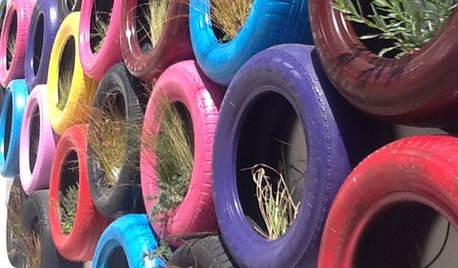
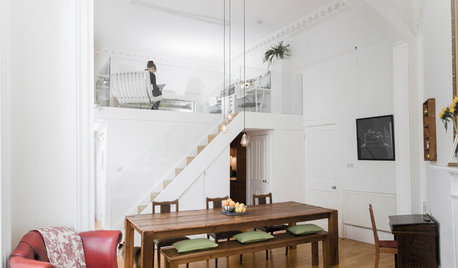

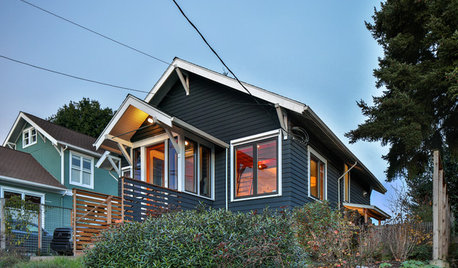

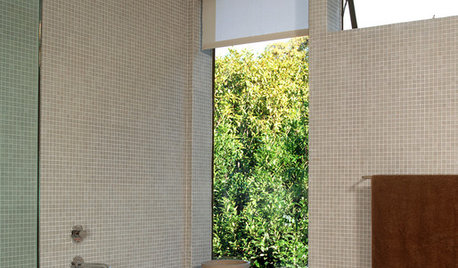









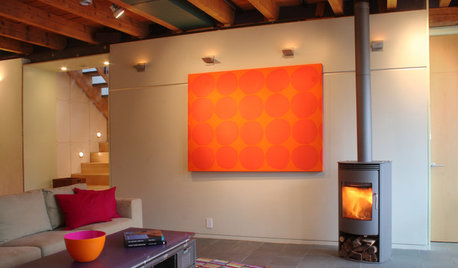


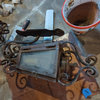
mightyanvil